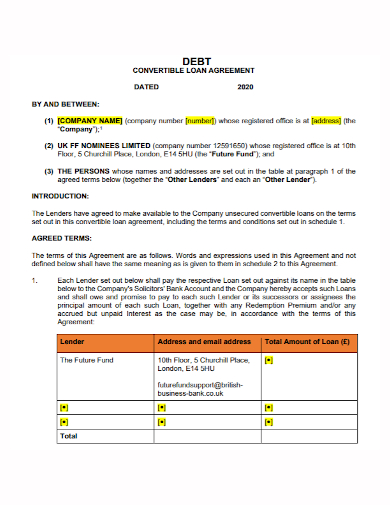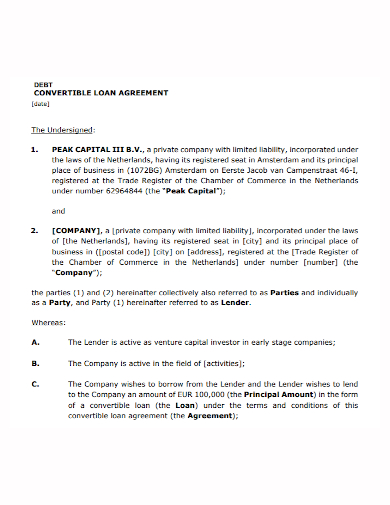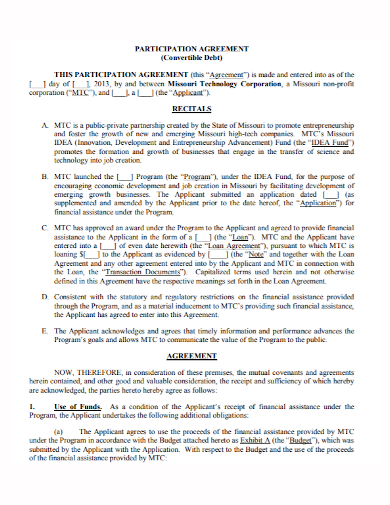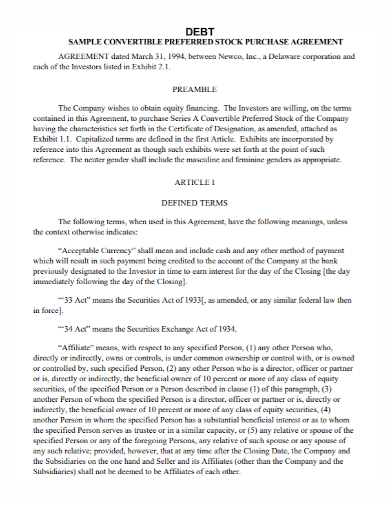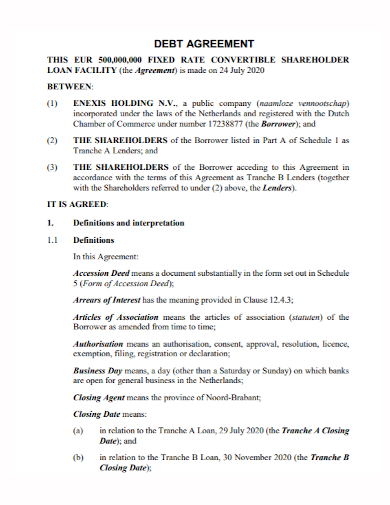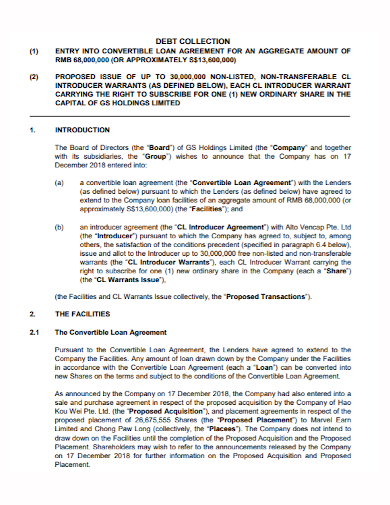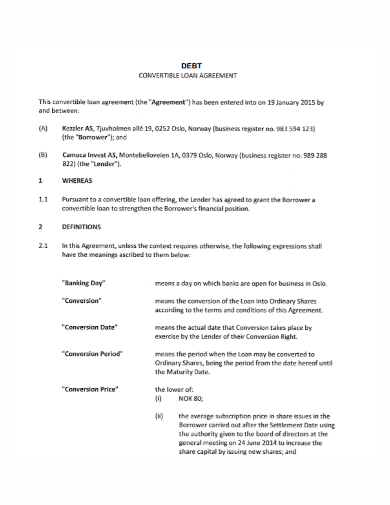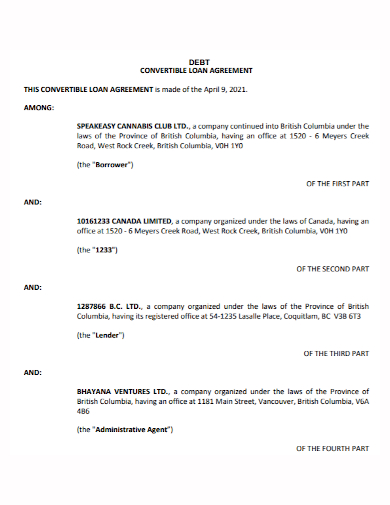A corporation borrows money from a lender with the intention of repaying all (or portion) of the loan by transforming it into a specified number of its shares outstanding at some time in the future. The loan agreement outlines the payback terms, which also include conversion timeline and value of shares, as well as the interest rate that will be payable until the conversion takes place. The lender has the option to convert the loan to stock based on the agreement’s “conversion privileges.” When the worth of the borrower’s shares reaches a particular threshold, the agreement may include a “callable option” that empowers the borrower to demand conversion.
10+ Convertible Debt Agreement Samples
Because most startups lack a credit history, obtaining a traditional loan from a traditional lender (such as a bank) is nearly impossible. Because it is an untested entity, a corporation in its early phases of development will frequently fail to convince a bank to lend it money. This is why startups aim to use equity to fund their initial operations. However, in order to sell stock, you must first determine the company’s value. Because estimating the worth of a business is nearly impossible (it’s just getting started, thus there aren’t any assets, revenue, or customers), establishing equity would be arbitrary. It would also make it more difficult to appraise the company fairly later, after it achieves positive cash flow.
1. Convertible Loan Debt Agreement
2. Convertible Debt Agreement
3. Company Convertible Debt Agreement
4. Convertible Debt Note Agreement
5. Convertible Debt Participation Agreement
6. Convertible Debt Stock Purchase Agreement
7. Convertible Shareholder Debt Agreement
8. Convertible Debt Collection Agreement
9. Convertible Debt Amendment Agreement
10. Debt Convertible Agreement
11. Sample Convertible Debt Agreement
Two main criteria separate a convertible debt note from a regular loan: the discount and the valuation cap. These characteristics drastically alter the DNA of a convertible debt note as a loan species. The early investor discount is a policy that compensates early investors for assuming greater risks than later investors. It accomplishes so by giving them the option to buy shares at a lower price than Series A investors once the Series A round has closed. The conversion cap awards early investors for their significant risk in a similar fashion to the discount, but in a different manner. The cap determines a company’s maximum valuation when Series A closes, providing early investors an edge once again.
When the Series A round concludes with a definite valuation, the discount and cap provide early investors with two options for valuing their original investment (loan). In most cases, one approach will provide a larger rate of return to the investor than the other.
This is why, in most convertible loan arrangements, the early investor gets the option to pick the lower of the discount or cap conversion (once sufficient funding is received in the Series A round). Though it may appear counterintuitive, the lower conversion price of the two approaches results in more shares being handed to the early investor upon conversion.
FAQs
What is a conversion price?
A convertible security, such as corporate bonds or preferred shares, can be changed into common stock at a conversion price per share. When a convertible security’s conversion ratio is decided, the conversion price is fixed.
What is a vanilla convertible bond?
A vanilla convertible bond allows the investor to keep the bond until it matures or convert it to stock. If the stock price has fallen after the bond was issued, the investor can keep the bond until it matures and receive the face value. If the stock price rises sufficiently, the investor can convert the bond to stock and choose whether to hold or sell the stock. When the gain from the stock sale surpasses the face value of the bond plus the total amount of remaining interest payments, an investor should convert the bond to stock.
If you want to see more samples and formats, check out some convertible debt agreement samples and templates provided in the article for your reference.
Related Posts
FREE 10+ Mentoring Agreement Samples In MS Word | Apple Pages | PDF
FREE 10+ Partner Agreement Samples In MS Word | Google Docs | Apple Pages | PDF
FREE 10+ Individual Agreement Samples In MS Word | Google Docs | Apple Pages | PDF
FREE 10+ Strategic Agreement Samples In MS Word | Google Docs | Apple Pages | PDF
FREE 10+ Equity Agreement Samples In MS Word | Google Docs | Apple Pages | PDF
FREE 10+ Producer Agreement Samples in MS Word | Apple Pages | PDF
FREE 10+ Grant Agreement Samples In MS Word | Apple Pages | PDF
FREE 8+ Meeting Agreement Samples in MS Word | Google Docs | Apple Pages | PDF
FREE 10+ Community Agreement Samples In MS Word | Google Docs | PDF
FREE 8+ Real Estate Option Agreement Samples in MS Word | PDF
FREE 10+ Call Option Agreement Samples In MS Word | PDF
FREE 10+ Advertising Agreement Samples In MS Word | Google Docs | Apple Pages | PDF
FREE 10+ Car Agreement Samples In MS Word | Google Docs | Apple Pages | PDF
FREE 10+ Horse Agreement Samples In MS Word | Apple Pages | PDF
FREE 10+ Option Agreement Samples In MS Word | Google Docs | Apple Pages | PDF

